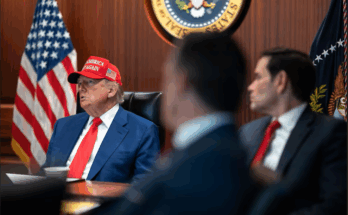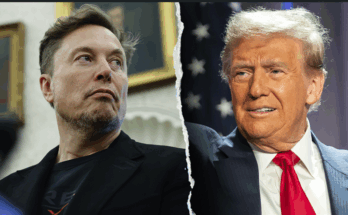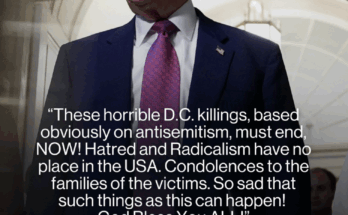‘Unprecedented’: How Trump has pushed the limits of presidential power in his first 100 days
One hundred days ago this week, just hours after taking the oath of office and reveling before a crowd of thousands at Capital One Arena, President Donald Trump signed the first executive orders of his second term.
With the stroke of his pen, he maintained he could freeze environmental and other agency regulations Congress had authorized. With another, he withdrew the U.S. from an international climate agreement.
“You’re witnessing the dawn of the golden age of America,” he told the roaring crowd. “That’s what it’s going to be.”
Overall, he’s issued more than 130 executive orders and even more memorandums, declared at least eight national emergencies and engaged in a showdown with the courts that has prompted debate on whether a constitutional crisis is underway.
MORE: Trump has lowest 100-day approval rating in 80 years: POLL

Driving much of his action is a legal theory advocated by conservatives that the Constitution gives a president nearly unquestioned control over the federal government.
Trump and his top officials also contend that he’s simply working to implement the agenda that Americans voted for in November.
But other constitutional and legal experts who spoke with ABC News call it unparalleled overreach.
“This really is unprecedented,” Elizabeth Goitein, the senior director of the Brennan Center’s Liberty and National Security Program, told ABC News.
“We’ve seen really broad theories of executive power advanced in previous administrations,” Goitein said. “There’s been a steady trend over the last few decades towards increasingly broad views of executive power, especially after 9/11. But this is unprecedented and it’s different in kind, not just in degree.”
Trump, in a recent interview with Time to mark 100 days, disagreed.
Trump’s ‘government by executive order’
Nearly every day since Jan. 20, Trump has signed executive actions in the Oval Office, often in front of television cameras. He’s signed the greatest number of executive orders in his first 100 days of any president going back 88 years.
“He’s trying to do government by executive order on a whole range of issues,” said David Schultz, a constitutional law expert at Hamline University.
Following Trump’s lead, his administration has carried out a dramatic purge of what Congress had set up as independent agencies, firing tens of thousands of employees, even those with civil service protections. He’s also sought to wipe out diversity, equity and inclusion (DEI) initiatives across the federal government.
Trump signed an order to diminish the Department of Education, with the ultimate goal of wiping away the agency established by law. He’s tried to effectively end birthright citizenship, which is enshrined in the 14th Amendment and has been upheld repeatedly by the Supreme Court.

To move forward with his immigration and economic policies, Trump has declared national emergencies that Goitein, an expert on presidential emergency powers, said are unjustified.
Despite border crossings being down, Trump invoked the 1798 wartime Alien Enemies Act to deport hundreds of Venezuelan migrants his administration alleged to be gang members, affording them little to no due process.
He invoked the 1977 International Emergency Economic Powers Act in order to impose sweeping tariffs on virtually all U.S. trading partners. Though it is Congress, not the president, that has the power to impose taxes and regulate trade — and the emergency power used by Trump makes no mention of tariffs.
At times, he’s used the power of the presidency to pursue retribution on political opponents. Seemingly contrary to his promise to end the “weaponization” of government and the justice system, he’s signed orders targeting specific law firms that took on clients or cases he disagreed with politically. He directed the Justice Department to investigate Chris Krebbs and Miles Taylor, two officials from his first term who’ve criticized him or challenged his 2020 election falsehoods.
Trump’s harshest critics say some action verges on authoritarianism, noting his open respect for “strongman” leaders, including China’s President Xi Jinping, Russia’s Vladimir Putin and Hungary’s Viktor Orban.
Pushback from the courts — but not from Congress
“Our Framers were envisioning that if a president tried to do things like this, Congress would step in,” said Schultz. “And right now, it looks like partisanship is more powerful than checks and balances.”
Despite having Republican majorities (albeit narrow ones) in the House and Senate, Trump has opted to largely go it alone on his agenda in his first 100 days. Republicans on Capitol Hill, so far, appear uninterested or unwilling to seriously challenge him.
“We’re all afraid,” GOP Sen. Lisa Murkowski, one of the few Republicans to be critical of Trump, told her Alaskan constituents last month. Murkowski added that “retaliation is real.”
While congressional pushback has been minimal, a clear clash is underway between the Trump administration and the courts as various groups and individuals challenge his policies.



